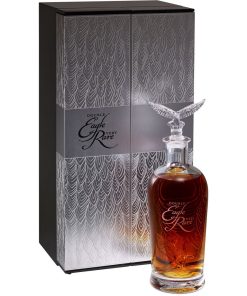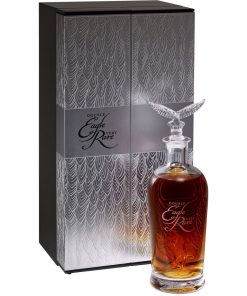Colonel E.H. Taylor Single Barrel Colonel E.H. Taylor
$ 194,99 $ 78,00
STRAIGHT KENTUCKY BOURBON WHISKEY
Colonel Edmund Haynes Taylor, Jr. is widely considered one of the founding fathers of the bourbon industry, fighting for the Bottled-in-Bond Act of 1897, nearly three decades after he purchased what is now called Buffalo Trace Distillery. During his time, Taylor implemented several innovative methods still used today, including climate controlled aging warehouses. Many of the barrels selected for the E.H. Taylor, Jr. Single Barrel are aged in Warehouse C, which was built by Taylor in 1881 and proven to be an excellent aging warehouse. Each barrel is hand-picked and Bottled in Bond at 100 proof to honor its namesake.
The aroma carries lightly toasted oak, with dried figs and butterscotch. One sip brings flavors of sweetness balanced with tobacco and dark spices. The finish is just long enough to prepare the palate for another sip. The bottle itself is a likeness to Colonel Taylor’s original design used over a century ago.
REVIEWS
Wine Enthusiast rating: 94
“A very sound whiskey that ably demonstrates the small Bottled-in-Bond sector of American whiskey making.” -Paul Pacult’s Spirit Journal
E.H. Taylor, Jr. was a visionary in the whiskey world with a mind for distilling that was years ahead of its time. He founded a world class Distillery, made advancements to the industry, and fought for the purity and legitimacy of bourbon gaining him the title of the “Father of the Modern Bourbon Industry.”
Taylor is celebrated for the countless innovations he contributed to the bourbon industry in his time. His first involvement in the industry came as a banker, aiding in the organization and financing of several distilleries. Through his experience as a banker, Taylor became personally acquainted with several prominent whiskey makers. Taylor’s 1869 purchase of a small Leestown distillery that he christened O.F.C. was his first foray into distilling, making an immediate mark on the industry by modernizing, expanding and upgrading the plant. Among his innovations were copper fermentation tanks, state-of-the-art grain equipment, column stills, modernized buildings, a more efficient sour mash technique and a first-of-its-kind steam heating system still used in the barrel warehouses today.
Quick Shipping and Professional Packaging
We offer a broad range of shipping options thanks to our long-running partnerships with UPS, FedEx and DHL. Our warehouse staff are educated to pack your items exactly as per the specifications that we supply. Your items will undergo a thorough inspection and be securely secured prior to being shipped. We ship to thousands of customers each day from multiple countries. This is a sign of our determination to become the largest online retailer worldwide. Both Europe as well as the USA have distribution and warehouse centers.
Please note that orders with more than one item will be given a processing time according to the specific item.
Prior to shipping, our team will perform an exhaustive inspection of the items you purchased. Today, the majority orders will be shipped within 48 hours. The delivery time is estimated to be between three and seven days.
Returns
The stock is constantly changing and cannot be fully controlled by us due to the involvement of several different parties, such as the factory and our warehouse. The actual stock can change at any moment. Please be aware it's possible your order may become unfulfilled when you have placed the order.
Our policy is valid for a period of 30 days. If it's been more 30 days since you purchased your item and we're unable to offer you a full refund or exchange.
You are able to return an item when it's unopened and is in the same condition when you first received it. It must also be in the original packaging.
Related products
Whiskey
Whiskey
Whiskey
Whiskey
Whiskey






































